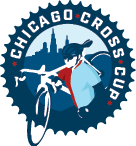Coach’s Corner – Cadence
The Concept
Cadence (RPM’s) has an influence on fatigue, power output and economy on the bike. There are two ways to make your bicycle go faster; push a larger gear and/or complete more revolutions per minute of the pedals. By increasing your cadence you can increase wattage and pace while putting less stress on your muscular system than you would while pushing a larger gear.
The Rationale
To watch a cyclist with effortless and fluid motion is a thing of beauty. They are more likely to maximize efficiency, avoid injury and prevent mechanicals. The load placed on the knee, for example, at 75 RPM’s vs. 100 RPM’s at the same speed is very different. The load placed on your muscular system is also very different – higher at lower RPM’s – and so with proper training you will be able to maintain a high pace/power level at 100 RPM’s for a longer period of time.
Different events require a different cadence. The metabolic cost of mashing a big gear at 70 RPM’s during a cyclocross race is too high, as is trying to maintain 120 RPM’s. Maximum efficiency reached during a road sprint is at 120+, while an ultra-endurance event requires a much lower cadence (65 – 85 RPM’s). Cross is somewhere in the middle and maximum efficiency, similar to a 20 – 40 K TT, falls in the neighborhood of 90 – 100 RPM’s.
Jamming out of the myriad of corners faced in cross race is also a huge contributor to the overall fatigue experienced during a race. Coming out in a big gear is akin to a dead lift; corner after corner. A nice high, smooth motion will reduce that effect tremendously. My favorite guy to watch to this end in the CCC series is Brian Conant. We train together occasionally and he is almost always in a lower gear than everyone else and you can see for yourself on race day how quickly and smoothly he jets out of every corner.
The Work
The idea is not to become comfortable at 130 RPM’s. It is to be comfortable at 95 or 100 RPM’s….but truly comfortable and fluid. The athletes that I coach usually find these to be the most difficult rides during the offseason. By end the base period though they find increased wattage without increased load derived from their newly developed neuromuscular system and pedal stroke. This is just one example of many options and these are so hard to complete that a custom approach to each cyclist is not a bad idea. Don’t worry about power, use as easy a gear ratio as necessary to maintain cadence:
100 RPMs for 5 minutes 1 minute off 105 RPM’s for 5 minutes 1 minute off 110 RPM’s for 5 minutes 1 minute off 115 RPM’s for 5 minutes 1 minute off 115 RPM’s for 5 minutes 1 minute off 120 RPM’s for 5 minutes 1 minute off 125 RPM’s for 5 minutes 1 minute off 130 RPM’s for 5 minutes 1 minute off 135 RPM’s for 5 minutes
These are “to fail”, meaning hang in there as long as you can and when you can’t keep the pace any longer the set is over, re-group and recover for the next. If you make it to 2 minutes into the 125 set then the goal for the next is to hang in to 130. As with all rides warm up for at least 15 minutes and down for at least 10. The above is one set and try to build to three over the course of your base period. Each set should be followed by 6 minutes of recovery. It is meant to be done on a trainer or rollers as I cannot imagine doing this on the road!
Since riding a trainer pretty well blows this time of year you may rather go for an outdoor-friendly version. As you become more comfortable with these you can add additional sets at increased cadence:
90 RPMs for 5 minutes
1 minute recovery
95 RPM’s for 5 minutes
1 minute recovery
100 RPM’s for 4 minutes
1 minute recovery
105 RPM’s for 4 minutes
1 minute recovery
110 RPM’s for 3 minutes
1 minute recovery
115 RPM’s for 3 minutes
1 minute recovery
120 RPM’s for 2 minutes
Questions? E-mail me at [email protected]
Rob Kelley
TRAINING BIBLE COACH
www.ROKcoaching.com
